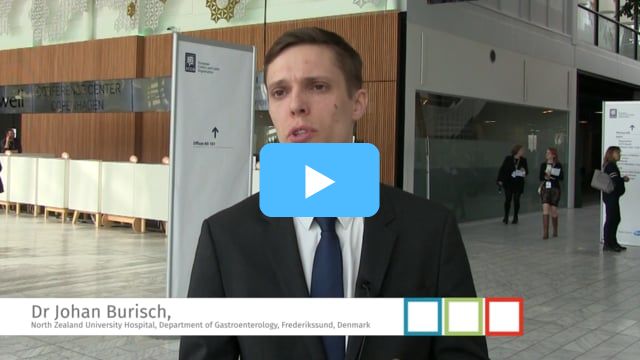Advertisment
IBD around the world

IBD is still mainly a phenomenon of the Western world, but the incidence is increasing steeply in newly industrialised countries where the population is undergoing rapid urbanisation…
Dr Johan Burisch (Frederikssund, Denmark) discusses his presentations at ECCO – the cost-saving effect of biological therapy, and ‘East meets West’: the epidemiology of IBD.
Dr Johan Burisch (North Zealand Hospital, University of Copenhagen, Denmark) presented an abstract with updated cost data from the Epi-IBD cohort, which is a population-based inception cohort of patients diagnosed with UC or CD at 31 centres in 20 European countries during 2010. The cost analysis included clinical costs and direct costs of procedures, treatments, hospitalisation and surgery during a five-year follow-up period. A total of 1,362 patients were included in the analysis, the majority from centres in Western Europe.
The total annual costs decreased during the follow-up period: total CD costs decreased from around 5,500 EUR to just over 1,600 EUR per patient-year, and total UC costs decreased from around 3,600 EUR to just over 670 EUR per patient-year. In both indications, the cost of biological therapies increased dramatically, but all other costs decreased, suggesting that biologics have a cost-saving effect overall (OP15).
Although IBD is still mainly found in Western societies, the incidence and prevalence of both CD and UC are increasing rapidly in newly industrialised countries in Asia and South America. In a tandem talk on how the epidemiology of IBD is changing across the globe, Dr Burisch and Professor Siew Ng (Chinese University of Hong Kong, China) highlighted similarities and differences between different parts of the world that may hold clues to IBD pathogenesis. Dr Burisch reminded the audience that Europe currently has an average annual incidence of IBD of around 18 per 100,000 population, with considerable variation between countries and clear north/south and east/west gradients, and the incidence is increasing in many countries.
IBD in Europe is characterised by a peak in incidence around 20–25 years of age in CD and 25–30 years UC, higher incidence in women in most age groups, and most patients being diagnosed with luminal disease although a substantial proportion will progress and develop stricturing or penetrating disease and require surgery. Smoking is a major environmental risk factor contributing to IBD in the west: approximately one-third of CD patients are smokers at the time of diagnosis, and in UC one-third of patients diagnosed are previous smokers.
In newly industrialised countries, the incidence of IBD is increasing rapidly and is by all accounts far from peaking. Professor Ng showed data from South Korea that the incidence of CD and UC increased by 14% and 9.5%, respectively, from 1991 to 2005, and likewise in Brazil, CD and UC increased by 11% and 15%, respectively, from 1990 to 2012. Data from the ACCESS inception cohort which covers 25 IBD centres in 12 countries across the Asia-Pacific region shows great variation between countries in terms of IBD incidence, from 0.7 per 100,000 in Thailand to more than 3 per 100,000 in parts of China.
The increase in incidence is seen not only in the paediatric population but also for example in elderly-onset UC, and there is a clear trend that countries with higher population densities and higher GDP – that is, countries with a higher degree of urbanisation – have higher IBD incidence. Unlike in the west, male patients predominate in most age groups in both UC and CD, and the prevalence of perianal CD is higher among black and Asian populations which suggests there may be differences in the genetic profile of CD between different populations.
Overall, Professor Ng stressed that CD in Asia is as complicated and in need of immunosuppression as in the west, whereas UC tends to be less severe and less likely to require early colectomy. The role of smoking in CD is something of a paradox in newly industrialised societies. Smoking rates in western countries with high CD prevalence tend to be low, and the proportion of patients diagnosed with CD who have never smoked is increasing. In contrast, many newly industrialised countries have high smoking rates and falling numbers of CD patients who have never smoked at diagnosis.
Another key environmental risk factor for developing IBD in newly industrialised countries is the diet since urbanisation tends to diminish microbial diversity and encourage pro-inflammatory species. A case-control study of 795 individuals who had migrated from the Middle East to Australia showed the importance of early life events for developing IBD. Among the migrant population, childhood hygiene factors such as having lived in a rural area, shared a bedroom, or looked after farm animals or pets were associated with significantly lower likelihood of having CD or UC, whereas no such correlation was seen among indigenous Australians. Professor Ng speculated that the way rapid urbanisation is reflected in the human microbiome is an important component in the development of IBD.
Based on presentations at the 14th Congress of ECCO, 6–9 March 2019, Copenhagen, Denmark.





